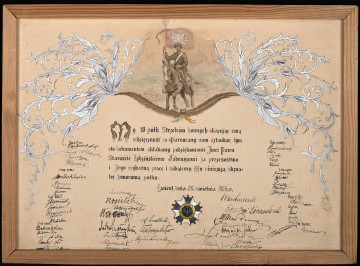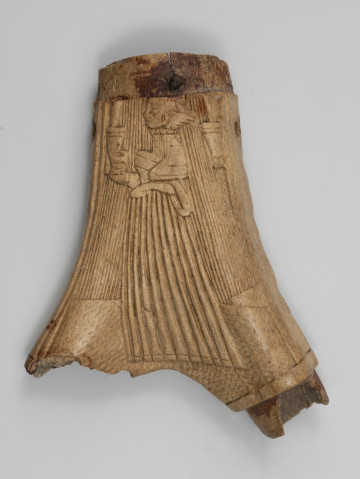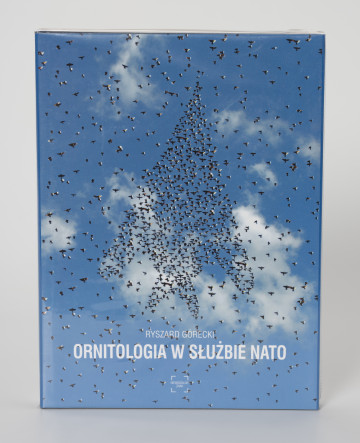
Diploma
20th century
Castle Museum in Łańcut
Part of the collection: History of the city and the region
The lithograph depicts a dragoon of the Polish Hose Guard from 1775. It was made in 1935 by Cavalry Captain Stanisław Gepner (1889-1965), who was associated with Łańcut as director of the State Museum Centre (currently the Castle Museum) between 1948 and 1950. Gepner was an expert in historical uniforms, weaponry, and historical horse-drawn vehicles. He was one of the regular contributors to the Encyklopedia Wojskowa (Military Encyclopaedia) published since 1931. In total, he published about 100 scientific papers and worked on popularising historical uniforms, armament and horse-drawn vehicles. In addition, he was also a painter, author of numerous drawings, watercolours and lithographs. He also worked with metal, creating works featuring horses and historical uniforms. The lithography technique used in the presented work was invented in 1797 by Aloys Senefelder, a Czech actor and playwright living in Germany. It was widely used in the printing industry as a method of reproducing illustrations. They are created by drawing lines on a smooth, polish surface of the lithographic stone (limestone slate) with a lithography crayon. The surface of the stone is then coated with acid. The acid does not come into contact with the stone where it is covered with crayon, while penetrating other areas. Then, the stone is wetted with water, which soaks into the acid-burned areas. After the stone is covered with paint, it is attached only to the crayon-covered parts, as it does not adhere to the wet spots. This enables the printer to obtain copies. Lithography became popular in the 19th century and in addition to artistic techniques - woodcut, copperplate, intaglio – was the main technique of making printed copies of illustrations until the introduction of autotype. Lithography in Poland was pioneered by Jan Siestrzyński, who worked with Aleksander Chodkiewicz. The first Polish lithographic prints were made in 1819. Lithography became the foundation of a technique that gained popularity today – flatbed printing. Joanna Kluz
Author / creator
Dimensions
height: 48 cm, width: 38 cm
Object type
History of the city and the region
Technique
painting, lithography
Material
glass, paper
Creation time / dating
Creation / finding place
Owner
Castle Museum in Łańcut
Identification number
Location / status

20th century
Castle Museum in Łańcut

1501 — 1600
National Museum in Szczecin

2009
National Museum in Szczecin
DISCOVER this TOPIC
Castle Museum in Łańcut
DISCOVER this PATH
Educational path